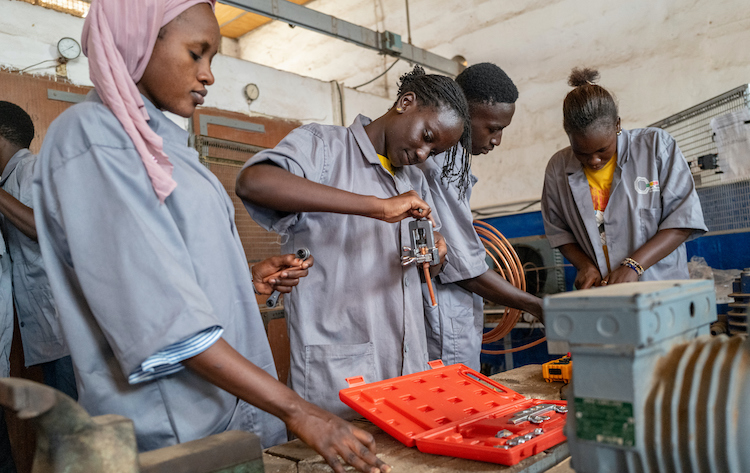In the dynamic world of education, creating a positive classroom environment is fundamental to fostering a culture of caring and empathy among learners. Research consistently highlights the significant impact of a nurturing classroom on leraner success, well-being, and overall development. This article delves into various thematic areas essential for building such an environment, emphasizing the role of empathy and care in shaping young minds.
Establishing a Welcoming Atmosphere
A welcoming classroom atmosphere sets the tone for learning and growth. According to a study by the American Psychological Association, learners who feel welcomed and valued are more likely to engage actively in their education. Simple practices like greeting students warmly each day and displaying their work can make them feel part of the classroom community, enhancing their sense of belonging and motivation.
Building Positive Relationships
Positive teacher-learner relationships are at the core of an empathetic classroom. A report from the National Education Association found that learners with strong teacher relationships are more likely to achieve higher academic outcomes and exhibit positive behaviors. Taking time to understand each learner’s background, interests, and strengths fosters trust and openness, allowing for more meaningful connections and better support.
Promoting Respect and Inclusivity
Creating an inclusive environment where respect is paramount ensures that every learner feels valued. The Southern Poverty Law Center’s Teaching Tolerance project highlights that classrooms celebrating diversity and teaching cultural sensitivity help reduce prejudice and promote mutual respect. By modeling respectful behavior and language, teachers can instill these values in their learners, encouraging a more harmonious learning environment.
Fostering a Sense of Safety and Security
Safety and security are prerequisites for effective learning. A study by the National Center for Education Statistics revealed that learners who feel safe at school are more likely to perform better academically. Clear and consistent classroom rules, alongside prompt responses to bullying and conflict, contribute to a secure environment where learners can focus on learning without fear.
Encouraging Emotional Expression
Providing opportunities for emotional expression is crucial for learner well-being. Research published in the Journal of School Psychology indicates that students who can freely express their emotions exhibit better mental health and academic performance. Activities like journaling, class discussions, and emotional literacy exercises help students articulate their feelings and develop emotional intelligence.
Showing Empathy and Understanding
Empathy is the cornerstone of a caring classroom. Active listening and validating learner concerns demonstrate that teachers genuinely care about their learners’ well-being. A meta-analysis by the Harvard Graduate School of Education found that empathetic teachers significantly improve learner outcomes, including increased academic performance and lower levels of distress.
Creating a Supportive Learning Environment
A supportive learning environment tailors academic support to individual needs. According to the Education Endowment Foundation, personalized learning approaches can lead to significant academic gains. Providing positive reinforcement and encouragement helps students feel supported and confident in their abilities, fostering a growth mindset.
Promoting Collaboration and Teamwork
Collaboration and teamwork are vital for developing social skills and a sense of community. The Organisation for Economic Co-operation and Development (OECD) reports that students engaged in collaborative learning activities tend to develop better problem-solving skills and achieve higher academic results. Encouraging group work and peer learning cultivates a supportive classroom culture where learners help each other succeed.
Maintaining Flexibility and Patience
Flexibility and patience are essential qualities for teachers in a positive classroom. A study by the University of Washington found that adaptable teachers who accommodate different learning styles and paces create more effective learning environments. Patience and understanding when learners struggle help build resilience and persistence.
Encouraging a Growth Mindset
A growth mindset, as popularized by Carol Dweck, emphasizes the importance of effort and learning from mistakes. Research from Stanford University shows that students with a growth mindset are more likely to embrace challenges and achieve higher academic success. Praising effort and progress rather than just achievement encourages students to persevere and view setbacks as opportunities for growth.
Incorporating Social-Emotional Learning (SEL)
Integrating social-emotional learning (SEL) into the curriculum develops essential life skills. The Collaborative for Academic, Social, and Emotional Learning (CASEL) reports that SEL programs improve learners’ social-emotional skills, behavior, and academic performance. Teaching empathy, self-awareness, and interpersonal skills prepares learners for success both inside and outside the classroom.
In concluding this piece, creating a positive classroom environment is not merely about maintaining order; it’s about fostering an atmosphere where empathy, care, and mutual respect thrive. By focusing on these thematic areas, teachers can transform their classrooms into nurturing spaces that support the holistic development of every learner. In doing so, they contribute significantly to the creation of a more compassionate and academically successful future generation.











